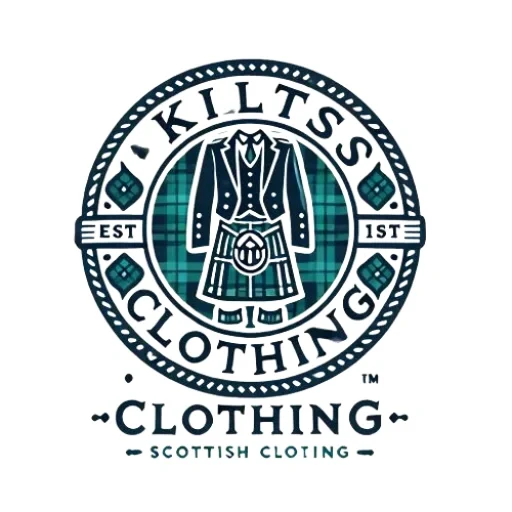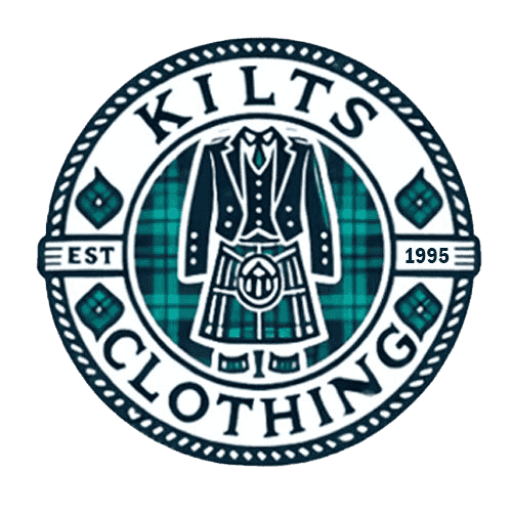Difference Between Men’s Kilts and Women’s Kilts
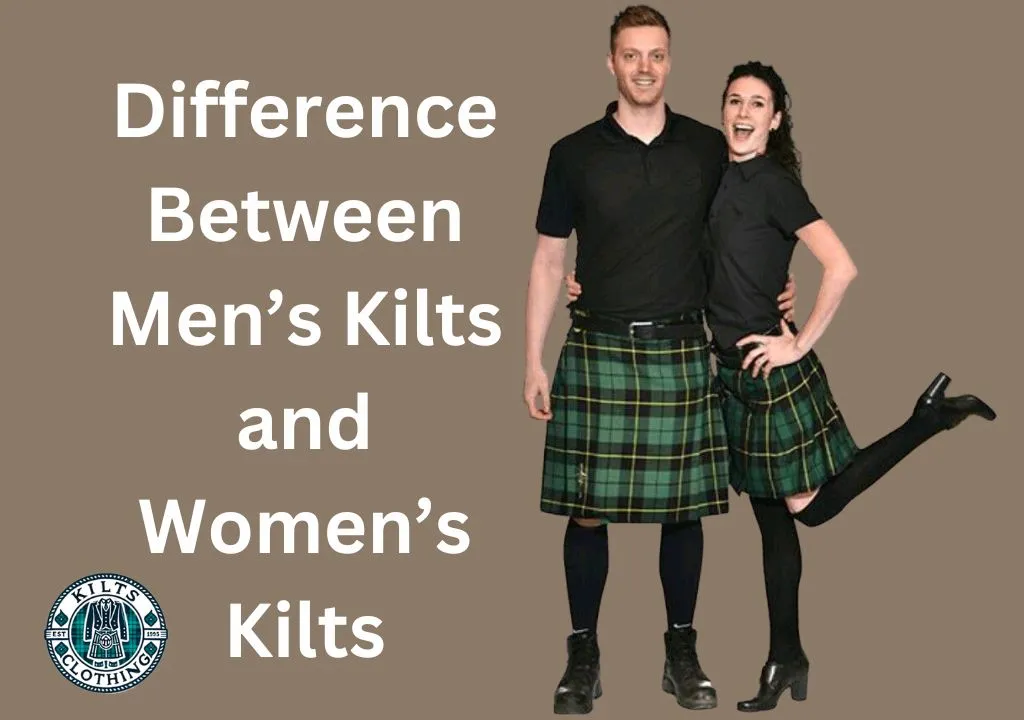
Traditional Kilt are a quintessential element of Scottish heritage, celebrated for their unique style and deep cultural significance. Whether worn by men or women, kilts symbolize pride, tradition, and identity. While kilts for both genders share some similarities, there are notable distinctions that reflect historical, cultural, and modern influences.
Introduction
The traditional kilt, a traditional Scottish garment, has been a symbol of national pride and cultural identity for centuries. Originally worn by men, kilts have evolved to include variations specifically designed for women. Understanding the nuances between men's and women's kilts is essential for appreciating the cultural heritage and the role these garments play in contemporary fashion.
Kilts for men have historically been associated with warriors and clan leaders, symbolizing strength and honor. Women's kilts, on the other hand, have become a symbol of elegance and feminine pride, particularly in modern times. This introduction will set the stage for a deeper exploration of the differences between men's and women's kilts.
Difference Between Men's Kilts & Women's Kilts
The difference between men's kilts and women's kilts primarily lies in their design and cultural significance. Men's kilts are traditionally longer, made from heavy wool, and feature deep wrinkles, creating a strong, masculine silhouette. These kilts often symbolize clan heritage and are designed for durability, suitable for both formal events and everyday wear.
In contrast, women's kilts are generally shorter and more tailored, with variations in fit, length, and fabric. Women's kilts emphasize elegance and femininity, often incorporating lighter materials like cotton or silk. The wrinkles in women's kilts are less pronounced, and the designs offer more versatility, blending traditional tartan patterns with modern fashion elements.
Styling and accessories further distinguish the two. Men's kilts are typically paired with traditional items like sporrans, belts, and kilt pins, enhancing their masculine appearance. Women's kilts, however, are often adorned with brooches, sashes, and shawls, adding a feminine touch that reflects both personal style and the occasion. These differences highlight the adaptability of kilts to evolving cultural norms and fashion trends.
Historical Background
Origin and Evolution of the Kilt
The kilt's origins date back to the 16th century, when it was predominantly a male garment in the Scottish Highlands. Early kilts, known as "great kilts," were large pieces of cloth wrapped around the body, offering both warmth and freedom of movement. Over time, the kilt evolved into the tailored, pleated form we recognize today, marking a significant shift in Scottish attire.
Women's kilts have a more recent history, emerging prominently in the late 19th century. As societal norms began to shift, women adopted kilts in a manner that reflected both traditional and evolving fashion sensibilities. This evolution underscores the dynamic nature of gender-specific attire in Scottish culture.
Historical Significance of Kilts for Men and Women
While traditionally associated with men, women also wore tartan garments, though not in the form of kilts. Instead, women donned tartan skirts or shawls, known as "arisaids." It wasn't until the late 19th and early 20th centuries that kilts specifically designed for women began to emerge, influenced by changing fashion trends and gender roles.
The cultural impact of kilts on both men and women has been profound. For men, kilts symbolize heritage and clan allegiance. For women, the adoption of kilts signified a blend of tradition and modernity, highlighting the shifting roles and identities in Scottish society.
Traditional Scottish Kilt Variations
Differences in Traditional Scottish Kilts by Gender
Traditionally, men's kilts are characterized by specific tartan patterns, often representing clans, regions, or families. These kilts are typically more structured, with deep wrinkles that add volume and movement. Women'sWhile women's kilts also incorporate tartans, they are usually designed with a lighter, more tailored fit, often with fewer wrinkles and a greater focus on elegance.
Women's kilts might also differ in length, with some styles extending to the ankles, compared to the knee-length design common in men's kilts. These variations reflect the different roles and expectations placed on men and women in historical Scottish society.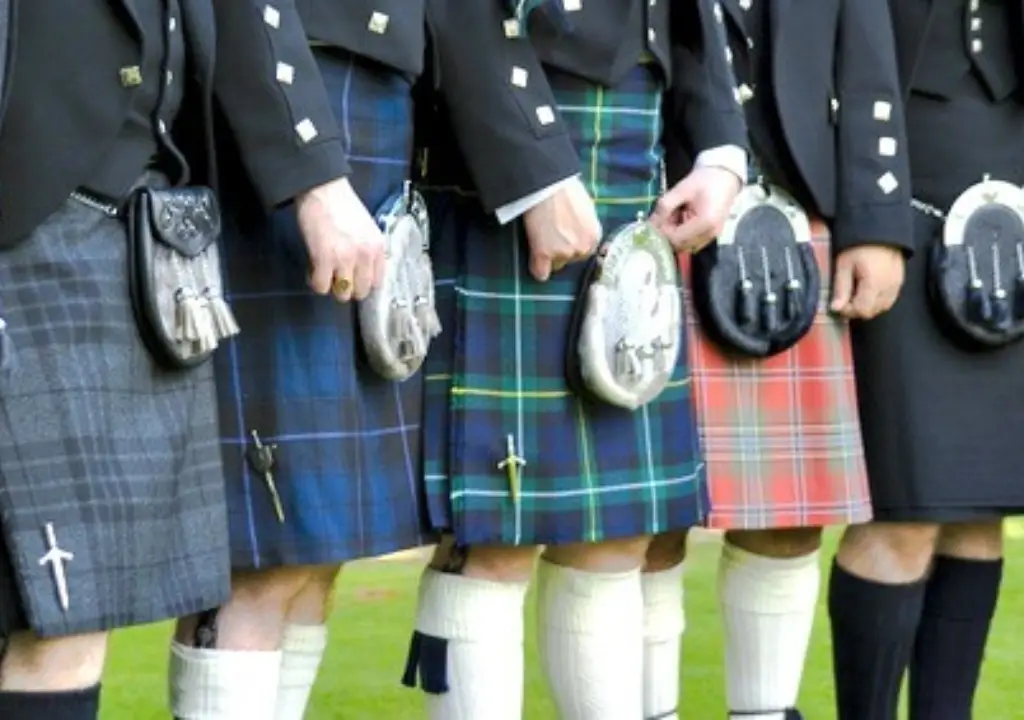
Role of Clan Tartans in Men's and Women's Kilts
Clan tartans play a significant role in both men's and women's kilts, serving as a symbol of heritage and identity. For men, wearing a clan tartan is a direct link to their ancestry and heritage. Women'sWhile women's kilts also feature clan tartans, they might use these patterns more subtly, integrating them into skirts or sashes rather than in the bold, full-kilt design seen in men's attire.
The use of clan tartans in women's kilts often extends to accessories such as sashes or shawls, which are worn draped over the shoulder. This not only highlights the feminine aspect of the attire but also maintains a strong connection to family lineage.
Modern Kilt Designs
Contemporary Trends in Kilt Designs for Men and Women
Modern kilt designs have evolved to cater to both men and women, with contemporary styles blending tradition with modern fashion sensibilities. Men's kilts often remain true to their traditional roots, featuring classic tartans and structured pleats. However, there is a growing trend towards modern utility kilts for men, which are more functional and versatile, appealing to those who want a blend of tradition and practicality.
Women'sIn contrast, women's kilts have seen a surge in creative designs, ranging from mini kilts to full-length tartan skirts. These contemporary styles often incorporate lighter materials, different lengths, and various embellishments, offering more options for personal expression and style versatility.
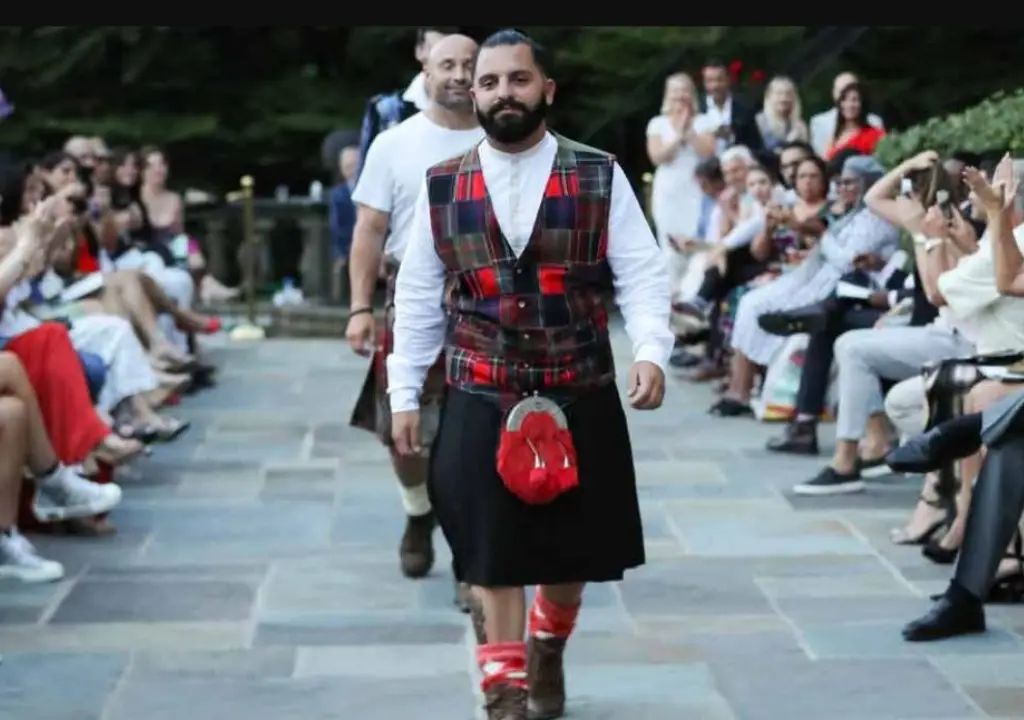
Influence of Fashion Design on Kilts
Fashion designers have played a crucial role in redefining kilts for both genders, introducing new materials, colors, and cuts. Women's kilts, in particular, have benefited from this innovation, with designs that range from traditional pleated skirts to more avant-garde interpretations, such as asymmetrical cuts or bold patterns.
The fashion industry's influence has also led to the creation of unisex kilts, which blur traditional gender lines and offer a more inclusive approach to kilt design. These kilts appeal to a younger, more diverse audience that appreciates the balance of tradition and modernity in their attire.
Fabric Choices in Kilts
Popular Fabrics Used in Men's Kilts vs. Women's Kilts
The choice of fabric is a key difference between men's and women's kilts. Men's kilts are traditionally made from heavy wool, chosen for its durability and warmth, making it ideal for the harsh Scottish climate. This fabric is also used because it holds pleats well, giving the kilt its distinctive structured look.
While women's kilts also use wool, they may incorporate lighter materials like cotton or silk, especially in more modern designs. These fabrics allow for greater movement and are often used in summer kilts or kilts designed for more casual wear, offering comfort without sacrificing style.
Regional Variations in Fabric Selection
Regional variations also influence fabric choices. Scottish kilts often use high-quality wool, while Irish kilts may include linen or lighter wool blends. These variations reflect different climate conditions and cultural preferences, with Irish kilts sometimes being lighter and less formal than their Scottish counterparts.
The choice of fabric also depends on the occasion; for example, formal events might require a heavier, more traditional fabric, while casual or summer kilts might be made from lighter materials that offer breathability and ease of movement.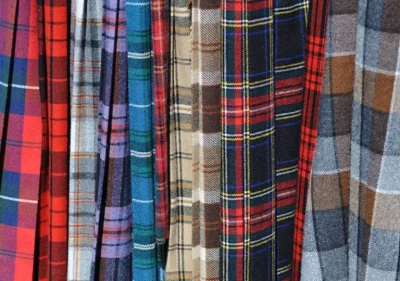
Tailoring Techniques
Differences in Tailoring Between Men's Kilts and Women's Kilts
Tailoring techniques differ significantly between men's and women's kilts. Men's kilts are typically tailored to be boxy and structured, with deep pleats that create volume and movement. The focus is on creating a strong, masculine silhouette that reflects the traditional use of the kilt as a garment for warriors and leaders.
Women's kilts, however, are often tailored for a more fitted, streamlined appearance, with pleats that are less pronounced. This allows for a more elegant drape that enhances the feminine form. The tailoring of women's kilts is often more intricate, with attention to details that highlight femininity and grace.
Importance of Customization and Fit
Customization is crucial in both men's and women's kilts, ensuring a perfect fit that complements the wearer's body shape. For men, this often means a kilt that sits high on the waist and falls to the knee, creating a traditional silhouette. Women's kilts may vary in length and fit, tailored to individual preferences and body types.
The importance of a proper fit cannot be overstated, as a well-tailored kilt not only looks better but also feels more comfortable to wear. Customization allows for adjustments in pleat depth, fabric choice, and length, ensuring that each kilt is a perfect match for its wearer, whether male or female.
Gender-Specific Attire
Key Distinctions Between Men's and Women's Kilts
The most apparent differences between men's and women's kilts lie in their design and styling. Men's kilts are traditionally longer and more structured, with a focus on bold tartan patterns that symbolize clan allegiance. Women's kilts, however, offer more variety in length, style, and fit, often featuring lighter fabrics and more decorative elements that add a touch of elegance.
Another key distinction is the use of accessories, with men typically wearing sporrans, belts, and kilt pins. While also incorporating these elements, women may opt for more decorative accessories such as brooches, shawls, and sashes, adding another layer of distinction to their outfits.
Influence of Gender Norms on Kilt Designs
Gender norms have historically influenced kilt designs, dictating the length, style, and even the occasions for which kilts are worn. For men, kilts have often been associated with masculinity and strength, while women's kilts have emphasized femininity and grace. However, modern fashion trends have seen a blurring of these lines, with unisex kilts becoming increasingly popular.
These changing norms have led to a more inclusive approach to kilt design, allowing individuals to choose kilts that reflect their style, regardless of traditional gender expectations. This evolution in kilt design mirrors broader trends in fashion, where gender fluidity and self-expression are increasingly valued.
Cultural Significance
Symbolism and Cultural Meaning of Kilts by Gender
Kilts hold deep cultural meaning, with symbolism often tied to clan heritage, regional identity, and personal pride. For men, kilts are often seen as a symbol of masculinity and bravery, representing their role as clan defenders. This symbolic meaning is often reflected in the bold patterns and colors of the tartans worn by men.
For women, kilts represent tradition, elegance, and a connection to cultural roots. Their adoption has further enriched this tradition, allowing for a broader expression of cultural pride across genders. Women's kilts often feature more delicate patterns and are worn in a manner that emphasizes grace and dignity.
Role of Kilts in Scottish and Irish Cultural Identity
In Scotland and Ireland, kilts play a crucial role in cultural identity. They are worn proudly at formal events, weddings, and cultural celebrations. The adoption of kilts by women has added a new dimension to this tradition, allowing for greater expression of cultural identity in both personal and public life.
Kilts have also become a symbol of national pride, with both men and women wearing them to celebrate their heritage. This shared tradition helps to strengthen cultural ties and ensure that the legacy of kilts continues to be passed down through generations.
Accessories and Styling
Typical Accessories for Men's and Women's Kilts
Accessories are an integral part of kilt attire, with men traditionally wearing sporrans, belts, and kilt pins. These items not only add to the kilt's aesthetic appeal but also serve practical purposes, such as holding personal items or securing the kilt in place.
While also incorporating these elements, women may opt for more decorative accessories such as brooches, shawls, and sashes, adding a touch of femininity to their outfits. These accessories often feature intricate designs and complement the overall look of the kilt, making it more suitable for formal or special occasions.
Influence of Traditional and Modern Styles on Kilt Accessories
Both traditional and modern styles influence how kilts are accessorized, with some opting for classic pieces while others embrace contemporary trends. For example, a man might pair his kilt with a leather sporran and belt, adhering to tradition, while a woman might choose a silk sash or decorative brooch, reflecting her style.
Modern fashion trends have also introduced new accessories into the kilt-wearing experience, such as stylish belts or modern sporrans that blend function with fashion. These trends allow for greater personal expression, making kilts more adaptable to various social contexts and events.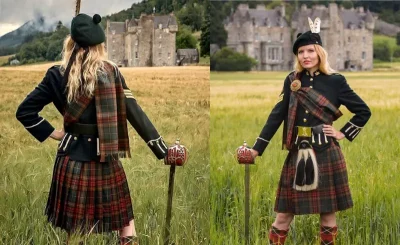
Utility Kilts
Practical Differences Between Utility Kilts for Men and Women
Utility kilts, designed for practical use, offer functional differences for men and women. Men's utility kilts are often more rugged, with larger pockets and a focus on durability. These kilts are designed to withstand outdoor activities and are often made from heavier materials that provide protection and longevity.
While also practical, women's utility kilts may be designed with a focus on comfort and style, offering a more fitted look. These kilts often feature smaller, more discreet pockets and are made from lighter materials that allow for greater movement, making them suitable for both outdoor activities and casual wear.
Popularity and Adoption in Contemporary Fashion
The popularity of utility kilts has grown in recent years, with both men and women embracing them for their versatility. These kilts are often seen in casual settings, outdoor activities, and even workplaces that value practical attire. Their adaptability to various environments makes them a popular choice for those who want to blend tradition with modern functionality.
Utility kilts have also found a place in the fashion industry, with designers creating stylish versions that appeal to a broad audience. This trend reflects a growing appreciation for kilts as versatile garments that can be worn in both traditional and contemporary contexts.
Formal and Casual Kilt Attire
How Formal Attire Differs for Men and Women
Formal kilt attire differs between men and women. Men traditionally wear a full kilt outfit that includes a jacket, sporran, and kilt hose. This ensemble is often completed with a belt and buckle, kilt pin, and a sgian dubh (a small ceremonial knife), creating an elegant and dignified look.
Women's formal kilt attire may include a tailored tartan skirt paired with a blouse and jacket, often accessorized with a sash or shawl. This attire is designed to be graceful and sophisticated, with an emphasis on femininity. The choice of accessories and the style of the skirt can vary, allowing women to express their style within the framework of traditional Scottish dress.
Casual Wear Trends in Kilts for Both Genders
In casual settings, kilts for both men and women are often paired with simple tops, boots, or flats. Men typically wear kilts of a standard length, reflecting a more relaxed approach to traditional attire. These kilts are often made from lighter materials and are less structured, making them suitable for everyday wear.
Women may opt for shorter kilt skirts or ladies' tartan skirts, which are more casual and comfortable. These kilts are often worn with modern accessories, such as casual belts or simple jewelry, creating a look that is both stylish and versatile. This trend towards casual kilt wear reflects the growing popularity of kilts as a part of everyday fashion.
Regional and Cultural Variations
Differences in Kilt Wearing Traditions Across Scotland and Ireland
Scotland and Ireland each have their kilt-wearing traditions, with variations in style, fabric, and accessories. Scottish kilts are often more formal and structured, with an emphasis on traditional tartans and accessories that reflect clan heritage. These kilts are commonly worn at formal events and are seen as a symbol of Scottish pride.
Irish kilts, on the other hand, maybe simpler, reflecting different cultural values and historical influences. They often feature solid colors or simpler patterns, and the accessories may be less elaborate, focusing more on functionality than decoration. These differences highlight the distinct cultural identities of Scotland and Ireland and their unique approaches to traditional attire.
Adoption of Kilts in Other Cultures
The kilt's influence extends beyond Scotland and Ireland, with adoption in various cultures worldwide. This global influence has led to new interpretations of the kilt, blending traditional elements with local fashion trends. For example, kilts have been incorporated into modern fashion shows and are worn by individuals who appreciate their history and style, even outside their traditional cultural context.
The adoption of kilts in other cultures has also sparked debates about cultural appropriation and the respectful use of tartan patterns. While some see the kilt as a symbol of cultural exchange, others believe that it should be worn with an understanding of its significance and history.
Iconic Kilt Designs
Famous Kilt Designs Worn by Men and Women
Iconic kilt designs have left a lasting impact on fashion, with certain patterns and styles becoming synonymous with Scottish and Irish heritage. The Royal Stewart tartan, for example, is one of the most recognized and has been worn by British royalty for centuries. This tartan is often associated with formal events and is a popular choice for those looking to make a statement.
Women's kilts have also seen iconic designs, such as those worn by notable figures in history and fashion. These designs have influenced the way kilts are worn today, with modern adaptations that continue to honor their historical significance. The use of specific tartans and the way they are styled can reflect personal and cultural identities, making kilts a powerful symbol of heritage.
Impact of Iconic Designs on Modern Kilts
The influence of iconic kilt designs continues to shape modern fashion, with both men's and women's kilts drawing inspiration from these classic patterns. Whether for formal occasions or everyday wear, these designs remain a staple of kilt fashion, representing a blend of tradition and innovation.
Designers today are reinterpreting these iconic patterns, introducing new colors, fabrics, and cuts that appeal to a contemporary audience. This evolution in design reflects the ongoing relevance of kilts in global fashion, ensuring that they remain a timeless and versatile garment for both men and women.
Conclusion
The differences between men's and women's traditional kilt reflect a rich history of cultural evolution, fashion trends, and changing gender norms. While rooted in tradition, kilts have adapted over time to accommodate modern tastes and preferences, making them a versatile and enduring symbol of Scottish and Irish heritage. As fashion continues to evolve, kilts for both men and women will likely remain a celebrated part of cultural identity, bridging the gap between past and present.
Kilts have become more than just traditional garments; they are symbols of identity, pride, and heritage. Whether worn by men or women, kilts continue to play a significant role in cultural celebrations, fashion, and everyday life. The ongoing evolution of kilt designs ensures that this iconic garment will continue to be a part of our cultural landscape for generations to come.
FAQs
Men’s kilts are longer, more structured, and made from heavier fabric, while women’s kilts are typically shorter, lighter, and more tailored.
Yes, a woman can wear a men’s kilt, but it may require adjustments for a better fit.
Kilts can be unisex, especially in modern styles, though traditional kilts have gender-specific designs.
Men’s kilts are longer and more structured, while women’s kilts are shorter, lighter, and more decorative.
Boys’ kilts are similar to men’s but smaller, while girls’ kilts resemble women’s with lighter, more fitted designs.
Kilts for men have stayed traditional, while women’s kilts have evolved to include various styles and lengths.
Men’s kilts use heavy wool for durability; women’s kilts often use lighter fabrics like cotton or silk for comfort.

